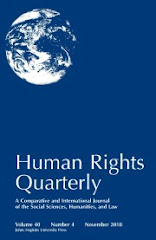This paper constitutes the introduction of the volume 'Concepts for International Law'. It is accompanied by the table of contents as well as the chapter abstracts. This introduction - a standalone piece - grapples with the relation between legal concepts, life and living in international law. First, we briefly explore the contemporary malaise in international law’s disciplinary life, in and for which this book emerges. We urge a sensibility that sees working on international law’s concepts as opening up a range of possibilities in how we may act, live, know, see and understand within and towards the discipline. Second, we offer an overview into how legal thought has, in its diversity, approached legal concepts. We aim to draw out those sensibilities that remain prevalent in today’s legal writings on concepts, whilst also pointing to the limits, nuances and fractures of these sensibilities. In this regard we offer detailed readings, criticisms and extensions of texts by Jhering, Hohfeld, Ross, Cohen, Kennedy, Koskenniemi, and Marks to name but a few. These readings primarily point to the intricate and intractable difficulties of reconciling concepts with social life. They also point to a series of shifting and entwined aesthetic, ethical and political presuppositions that dominate the various ways in which we approach legal concepts today. In showing the diversity of legal sensibilities towards legal concepts, we hope to not only open up the various possibilities and limits of these sensibilities, but to point towards the intellectual cultural resources at the modern scholar’s disposal. Third, and finally, we offer an introduction to the volume itself. Here we outline how we chose its concepts, the types of concepts contained therein, and how we see the complex relations between different concepts.
Monday, June 11, 2018
d'Aspremont & Singh: The Life of International Law and its Concepts
Jean d'Aspremont (Univ. of Manchester - Law; Sciences Po - Law) & Sahib Singh (Univ. of Helsinki; Univ. of Cambridge) have posted The Life of International Law and its Concepts (in Concepts for International Law. Contributions to Disciplinary Thought, Jean d'Aspremont & Sahib Singh eds., forthcoming). Here's the abstract:





